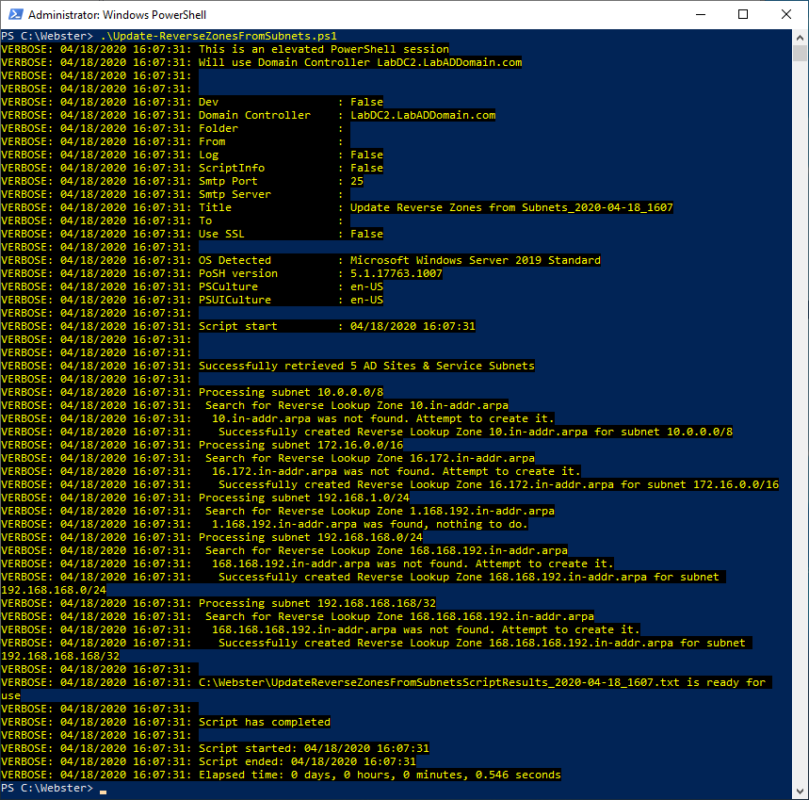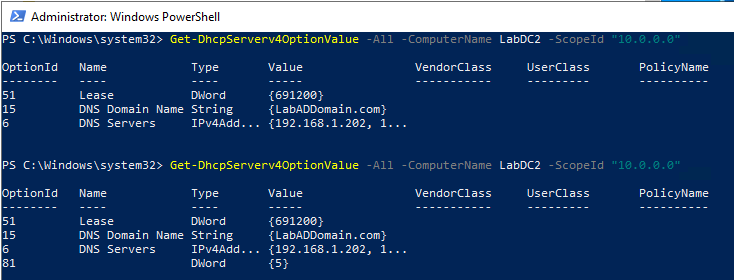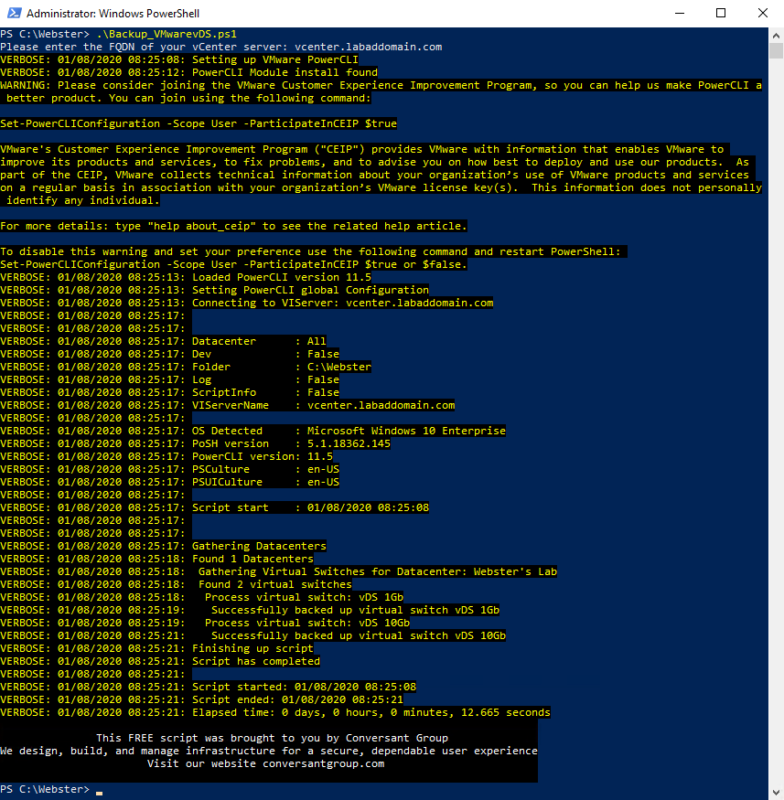Citrix XenApp 6.0 Documentation Script Update Version 4.34
Citrix Federated Authentication Services Script Update Version 1.11
Citrix XenDesktop 5.x Documentation Script Update Version 1.26
VMware vCenter Documentation Script Update Version 1.91
Citrix XenMobile Documentation Script Version 1.04
Update Active Directory DNS Reverse Lookup Zones from Sites and Services Subnets (Update-ReverseZonesFromSubnets.ps1 V1.10)
Find Services Using a Domain Account on Specified Computers in Microsoft Active Directory (Get-ServiceAccounts V1.10)
Microsoft Configuration Manager 2012 R2 PowerShell Documentation Script Version 2.38
Microsoft Active Directory Health Check PowerShell Script Version 2.08
New Script: Update Active Directory DNS Reverse Lookup Zones from Sites and Services Subnets (Update-ReverseZonesFromSubnets.ps1)
While Active Directory (AD) does not need DNS Reverse Lookup Zones, most Citrix and VMware products do. If you are visiting my website, you probably use Citrix and VMware products. If you have heard or read any of my AD conference or CUGC presentations, you know how important AD Sites and Services Subnets and DNS Reverse Lookup Zones are to Citrix and VMware.
The Mysterious Microsoft DHCP Option ID 81
Recently I worked on a project where I needed to create a PowerShell script to automate the creation of numerous Microsoft DHCP servers and all their scopes, scope options, reservations, all settings. The original DHCP servers were in an old Active Directory domain, and a new AD Forest was created with a different networking scheme. I used the output from the DHCP documentation script to gather all the info needed, but there was one scope option that had me stumped.
Group Policy Default Settings Reference for Citrix XenApp and XenDesktop V1.30
Group Policy Default Settings for Citrix Virtual Apps and Desktops That Changed Between 1912 and 2003
CUGC DC 10+ Things in Active Directory
VMware vCenter Documentation Script Update Version 1.90
New Script: Backup VMware Virtual Distributed Switches V1.00
I wrote an article on how to Backup the vCenter Server Appliance using NFS and then needed to figure out how to restore the backup. In VMware’s article on restoring a vCenter server, I saw this:
“If you use a distributed virtual switch, you are advised to export
separately the distributed virtual switch configuration before you
restore to a backup. You can import the configuration after the restore. If you omit this consideration, you may lose the changes made to a distributed virtual switch after the backup.
Updating the vCenter Server Appliance
The vCenter Server Appliance (VCSA), like all software, receives updates. The VCSA makes it drop-dead simple to update. Before you start, the first thing to do is to back up the VCSA. After you have a backup, you can continue with the update.
Backup the vCenter Server Appliance using NFS
Updated 31-Dec-2019 to show ten days of Scheduled Backups.
Updated 23-Dec-2019 to show the results of the Scheduled Backup job.
It is important to have a backup of all important data, servers, and Virtual Machines, whether in a lab or production environment. Before making major changes to the vCenter Server Appliance (VCSA), it is important to make a backup first. This article covers backing up the VCSA using NFS.





